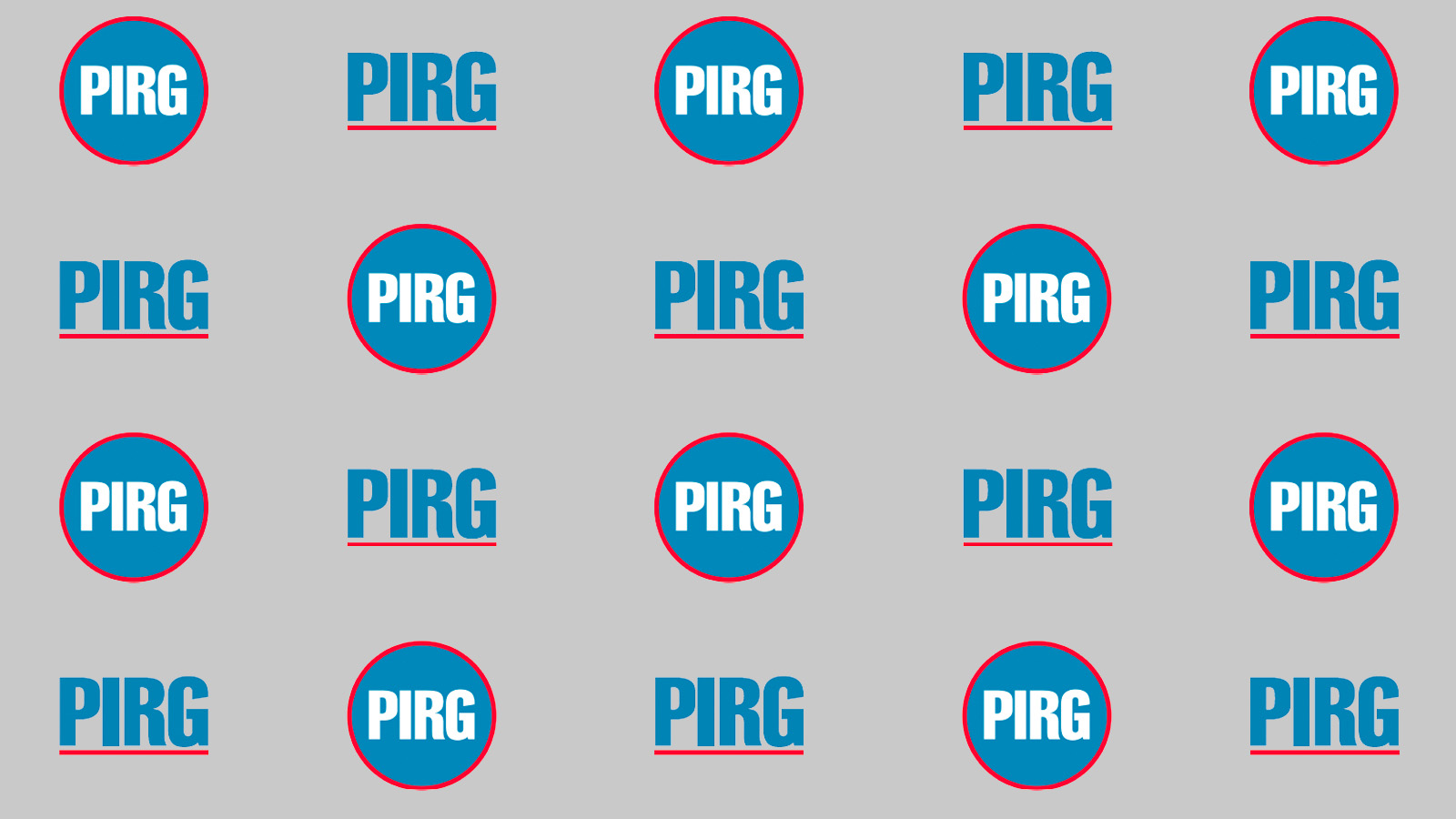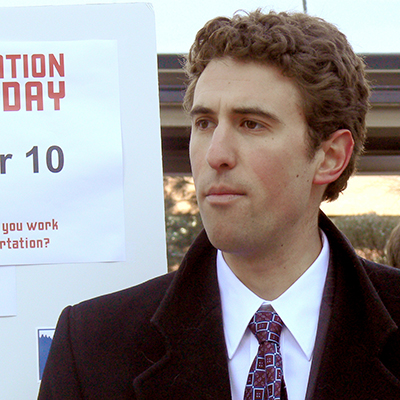
How a new emphasis on safer streets could drive big change in Colorado
With the passage and signing of SB110, Colorado will add $30 million to the CDOT safe streets programs that are putting the safety of people first. This new injection of money builds momentum for the kind of transformation we need to see on our main streets and downtowns - change that needs even bigger investments over the next decade.

We need streets that are safe for everyone, whether you are walking, biking, rolling, riding transit or using a car. Sign this petition to make all our main streets people-friendly.
Streets are for people. Yes, we use them to travel through a community. But streets, especially our main streets, are also where people live, work, play, shop, sit outside, and enjoy the (mostly) sunny weather that makes the quality of life in Colorado so great.
Unfortunately, too many of our streets are unsafe for people. Designed to maximize “throughput” and vehicle speeds, many streets are barriers that unnecessarily endanger people’s lives every day.
Some streets are more dangerous than others. A handful of streets tend to make up the vast majority of the crashes that result in serious injuries and fatalities – a high-injury network.
According to DRCOG’s 2050 Metro Vision Regional Transportation Plan, approximately 10% of the roads in the Denver metro region make up the area’s high-injury network and account for an astounding 71% of the fatal crashes and 82% of the crashes resulting in death or serious injury for people walking.
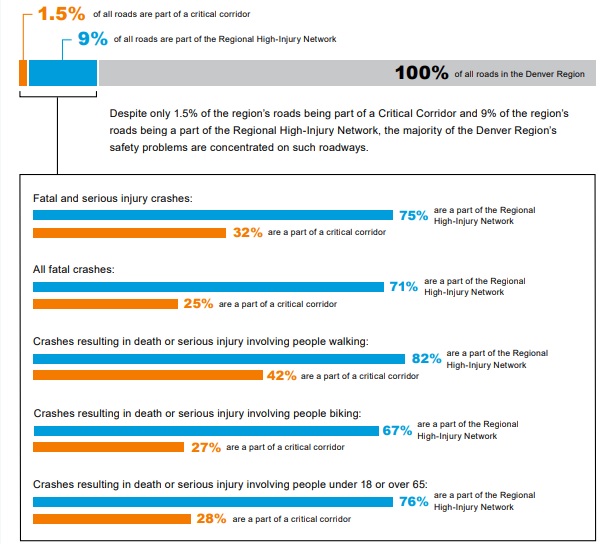
Credit – DRCOG 2050 Metro Vision Regional Transportation Plan
Many of the streets that make up the Denver region’s high-injury network are urban arterials – streets like Federal Blvd, Colorado, Colfax, and Wadsworth. These streets were originally state highways but as residents and businesses built up around them, they are now the equivalent of main streets for hundreds of thousands of people.
In addition to these urban arterials, many of our rural highways are the literal main streets of towns across the state. For example, just driving on state highways from Denver to Durango takes you straight through the heart of dozens of downtowns.
Focusing dollars on main streets in urban rural areas not only puts the dollars where we have our high-injury network and can prevent deaths and serious injuries, but also hits at the heart of the quality of life for millions of Coloradans.
Enter two new CDOT programs focused on main streets.
The Revitalizing Main Streets program was launched last June, with an initial investment of $4 million, focused on promoting public health during the COVID emergency, through socially-distant active transportation and economic development opportunities in downtowns across Colorado.
The Safer Main Streets program, launched last spring, is focused on building out sidewalks, adding safety signals, improving intersections, and increasing safe access to transit and bikeways on main streets across the Denver metro area.
In December 2020, CDOT partnered with DRCOG to announce the initial thirty projects for the Safer Main Streets programs, totalling $59 million.
What they are focusing dollars on is great.
Here are some examples with descriptions pulled from CDOT’s release:
- Sidewalks – Installing new sidewalks and curb ramps with access for people with disabilities where sidewalks are missing or damaged on Federal Boulevard from US 285 to West Floyd Ave.
- Protected Bike Intersection – Add protected east and west bike lanes on Colorado Avenue between Regent Drive to east of 28th Street (US 36) intersection in Boulder. Improvements also include rebuilding pedestrian refuge islands, new crosswalk and bike lane markings, new southbound left turn lane on Colorado Avenue and an additional traffic signal.
- Transit Access Improvements – Provide safe pedestrian and bicycle access along the US 287/120th Avenue corridor in Broomfield by improving and building sidewalks, pedestrian crossings and access to transit stops.
- Pedestrian Safety Improvements – Improve pedestrian safety by removing a through lane in Denver on West Mississippi Avenue between Eliot Street and Quivas Street, adding a raised-curb median and building out curb extensions.
- Shoulder Improvements for Bicyclists – Widen narrow shoulders with rumble strips. This will warn drivers when they are leaving the lane, provide refuge for cars that need to pull off and a safer space on the shoulder for bicyclists and pedestrians traveling to and from Daniels Park Road and Happy Canyon Road in Douglas County.
Projects range from $248,000 to $10 million. Many of them move beyond just fixing a specific intersection and invest dollars throughout a whole corridor. There’s an additional $18 million pending with announcements expected soon.
This is exactly what we should be spending money on to ensure our streets are safe and people-friendly.
With the new $30 million from the legislature, the total for both programs stands at $111 million. It feels like a lot….partly because we have so rarely focused dollars in this way.
These safety improvements can often seem like “small stuff” compared to the bigger rail, highway and road repaving projects that dominate transportation budgets, not worth the hundreds of thousands (or millions) of dollars those large projects receive. But these “small dollar” projects will have a real impact on a lot of people who live on main streets and downtowns or those who have to travel along or across them just to live their lives.
Downtowns, main streets and the urban arterials that have become so many of our main streets should be vibrant community centers but people need to feel safe accessing them, no matter how they get there. At some point, everyone is a pedestrian on a main street – grabbing food, accessing services, or enjoying the people and culture that makes Colorado so great.
So while $111 million is a lot in comparison to the past, it won’t overcome decades of underinvestment.
Let’s take the next few years and focus our limited transportation dollars on making every downtown and main street people-friendly.
We need to do two things to keep this momentum going. First, we need to get these dollars spent and these safety projects online quickly and ensure the initial goals laid out in the projects so far are met.
Second, we need Coloradans to contact elected leaders at the legislature, municipal level, the Governor’s office and CDOT, to applaud them for this new emphasis and call for more.
I believe that Coloradans value the benefits of people-friendly main streets and downtowns a lot, where you can eat outside, stop in at a brewery, shop at a farmer’s market, attend a concert, play in a fountain, and access important services.
However, I don’t think our decision makers fully recognize this – especially when you look at how little is being spent on the livability of main streets.
That recognition is starting – with a $111 million and a couple of great new programs. It’s our job to ensure the momentum grows.
Add your name to this petition – let’s show them how important safer main streets are.
Topics
Authors
Danny Katz
Executive Director, CoPIRG
Danny has been the director of CoPIRG for over a decade. Danny co-authored a groundbreaking report on the state’s transit, walking and biking needs and is a co-author of the annual “State of Recycling” report. He also helped write a 2016 Denver initiative to create a public matching campaign finance program and led the early effort to eliminate predatory payday loans in Colorado. Danny serves on the Colorado Department of Transportation's (CDOT) Efficiency and Accountability Committee, CDOT's Transit and Rail Advisory Committee, RTD's Reimagine Advisory Committee, the Denver Moves Everyone Think Tank, and the I-70 Collaborative Effort. Danny lobbies federal, state and local elected officials on transportation electrification, multimodal transportation, zero waste, consumer protection and public health issues. He appears frequently in local media outlets and is active in a number of coalitions. He resides in Denver with his family, where he enjoys biking and skiing, the neighborhood food scene and raising chickens.
Find Out More
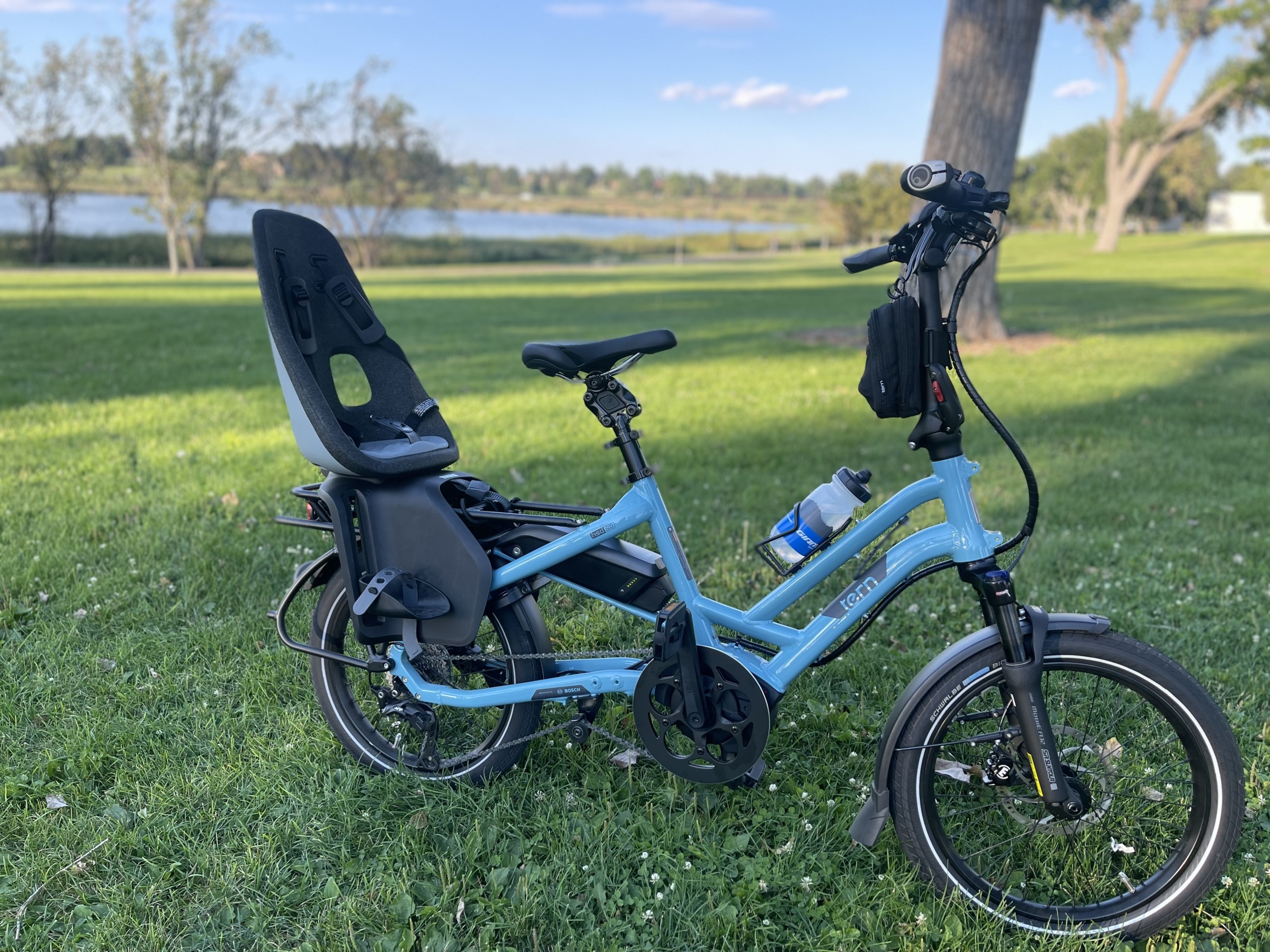
How to get the Colorado state e-bike tax credit
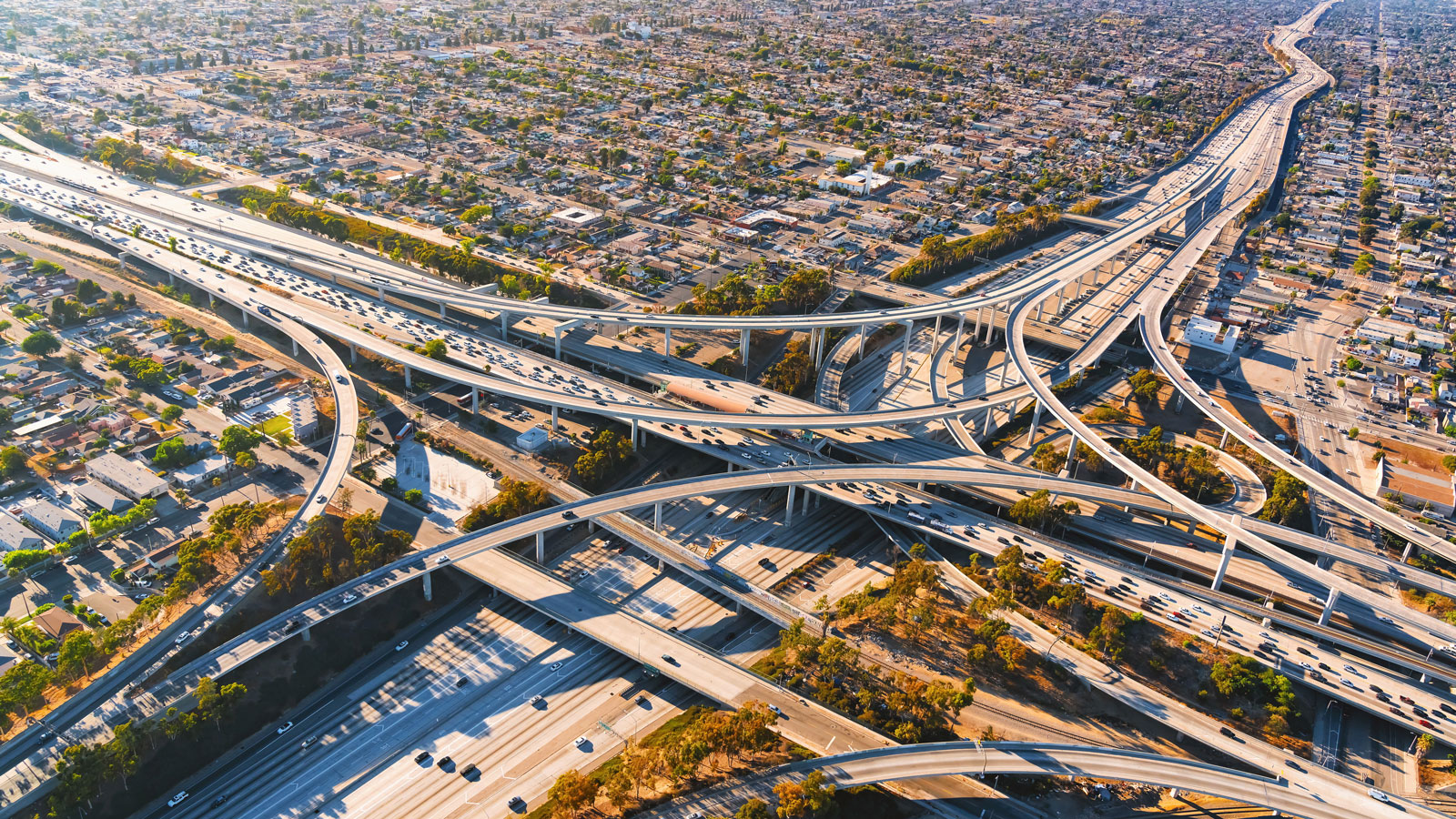
A threat to federal climate investment: Highway boondoggles
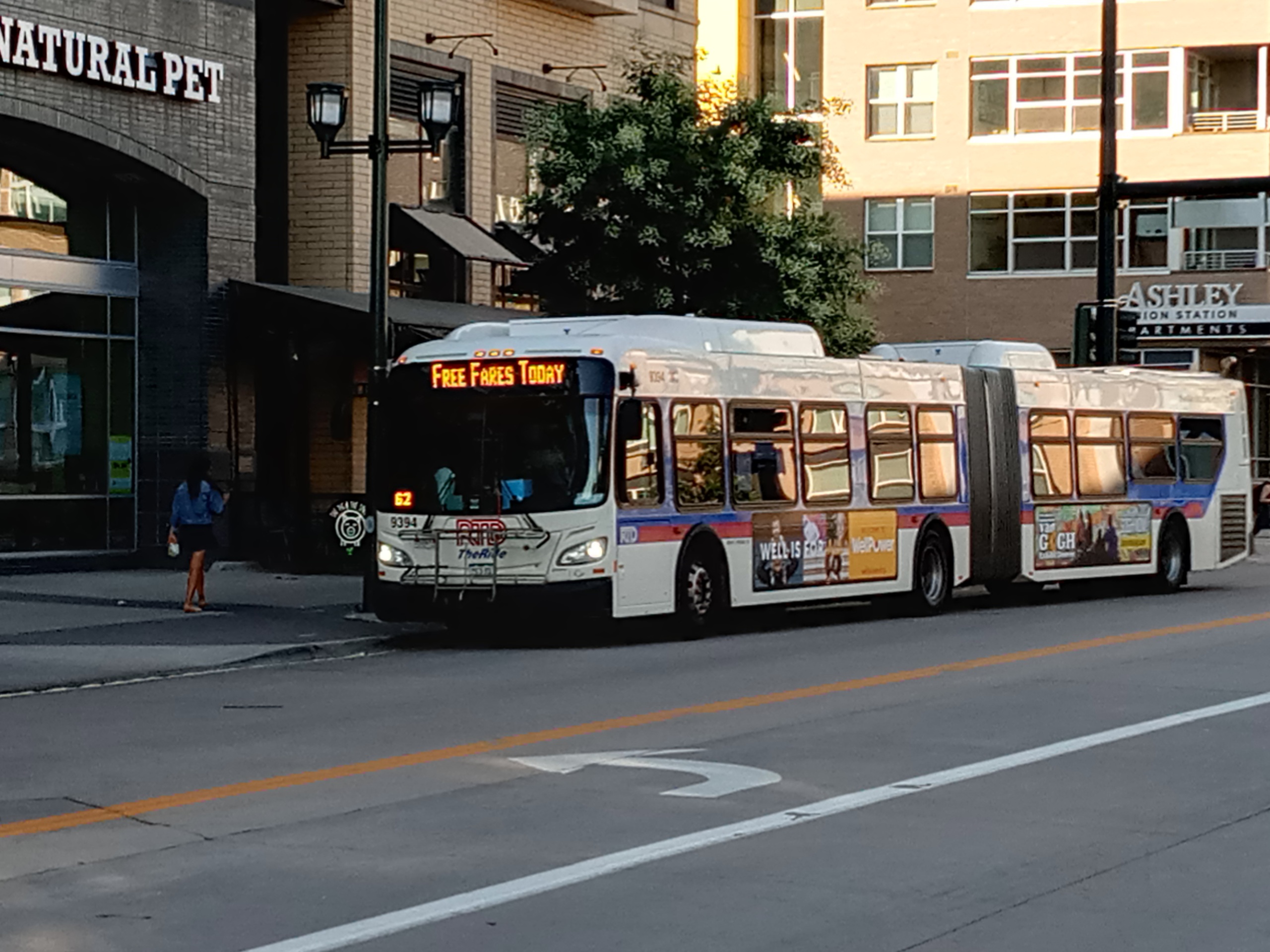
Every bus, every train will be free to ride in the Denver area July and August
